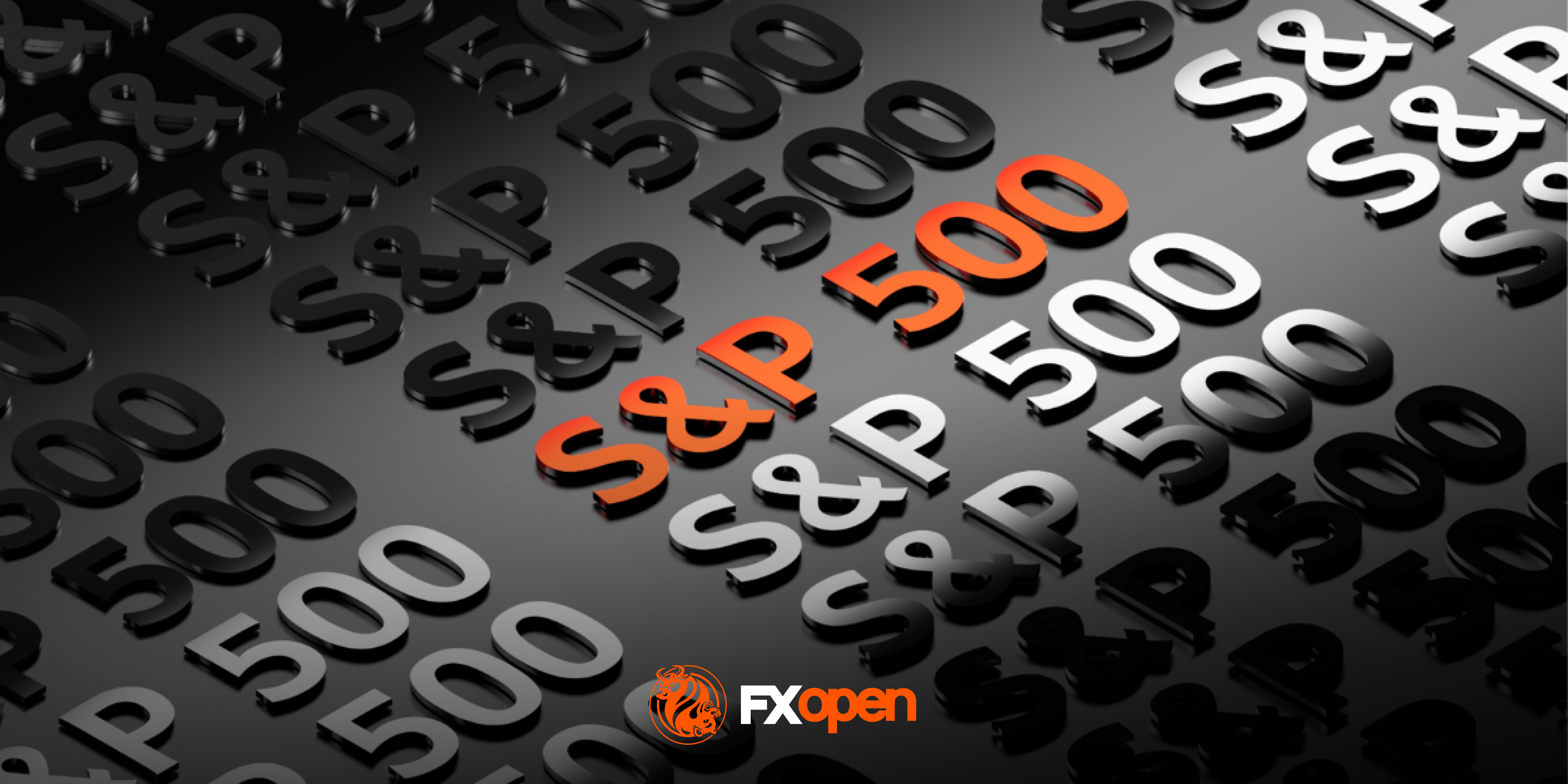FXOpen

The British pound to Australian dollar (GBP/AUD) exchange rate, influenced by economic factors in the UK and Australia, is a key focus for traders. This article provides an in-depth analysis of recent trends and analytical British pound to AUD forecasts for 2024, 2025, and beyond, examining factors like monetary policy, inflation, and global trade.
Recent GBP/AUD History
The British pound (GBP) to Australian dollar (AUD) exchange rate has experienced significant fluctuations since 2019, driven by economic factors and global events.
In 2019, the GBP/AUD exchange rate remained relatively stable in a general upward trend, opening around 1.78 and closing at 1.88. While Brexit uncertainty hit the pound, progress in late 2019 helped boost optimism. Meanwhile, the Australian dollar reflected the nation’s relatively strong economic performance.
In early 2020, the COVID-19 pandemic triggered extreme volatility in global markets. The rate jumped to a high of 2.08 in March as investors dumped AUD. The Bank of England (BoE) rushed to cut interest rates amid a deep economic contraction. However, a sell-off started soon and the pair fell to 1.80 by July. Likewise, a recovery in commodities in the latter half of 2020 helped buoy the Australian dollar, with the pair ending the year at 1.77.
In 2021, the GBP/AUD rate hovered between 1.74 and 1.91. The UK’s faster vaccination rollout and stronger economic recovery pushed the pound higher in the first half of the year. By August, the exchange rate hit a peak of 1.91, supported by the UK’s reopening after lockdowns. In contrast, Australia’s slow vaccine rollout and periodic lockdowns weakened the AUD.
After a high of 1.92 in early 2022, the pound fell sharply against the Australian dollar. Concerns around soaring inflation and a potential recession hurt the pound, while a continued strong recovery in commodities helped the AUD. A shift in leadership to Liz Truss and her subsequent mini-budget roiled UK markets, sending the pair plummeting to 1.59 by September. However, GBP/AUD eventually closed the year at 1.77.
In 2023, GBP/AUD rebounded, trading above 1.80 throughout much of the year. The BoE’s ongoing efforts to curb inflation through further interest rate hikes supported the pound, while the Australian dollar faced downward pressure from falling commodity prices and slower growth in China, a key trade partner. After a multi-year high of 1.99 in August, GBP/AUD eventually closed 2023 at 1.86.
As we entered 2024, the pound continued to appreciate against the Aussie dollar, largely supported by a higher interest rate from the BoE, strength in the UK economy, and relative weakness in Australia and China. In August, the pair reached another multi-year high of more than 2.00. At the time of writing in September, it’s trading around 1.96.
To explore real-time GBP/AUD charts and analyse its price movements, head over to FXOpen’s free TickTrader trading platform.
UK Economic Outlook for 2024
The UK economy throughout the remainder of 2024 is expected to face a mixed outlook, shaped by ongoing challenges and recovery efforts. According to the Bank of England, economic growth is anticipated to slow in the latter part of the year. They project quarterly GDP growth to fall to 0.4% in Q3 and 0.2% in Q4. This slowdown comes after stronger-than-expected GDP growth of 0.7% in the first half of the year and is partly due to the cumulative effects of restrictive monetary policy.
Although inflation fell to 2% by mid-2024, it is anticipated to rise slightly in the second half of the year to 2.75%, as energy price drops from 2023 are no longer reflected in annual comparisons. Pay growth remains higher than anticipated, with private sector regular weekly earnings growing at 5.6%. This wage inflation contributes to sustained high service sector inflation, which the Bank forecasts will ease only gradually.
The BoE’s August report also notes that household spending growth is expected to remain low for much of 2024 as consumers continue to deal with higher living costs and reduced real incomes. However, spending is projected to gradually increase throughout the year, contributing to a modest recovery by the year's end. Meanwhile, business investment growth is forecast to maintain a steady 2% rise, driven by infrastructure projects and a focus on digitalisation.
While the UK’s strong performance in the first half of 2024 has made it the fastest-growing economy in the G7, the outlook remains cautious. The new Labour government has warned of a £22 billion shortfall in public finances, indicating possible fiscal tightening in the coming months. This could dampen some of the recovery momentum.
Overall, the UK's economy in 2024 is expected to experience subdued growth, with inflationary pressures easing, but fiscal constraints and global economic uncertainties remain significant.
Australian Economic Outlook for 2024
Australia’s economic outlook for 2024 presents a mix of challenges and gradual recovery. Growth is expected to be subdued, with GDP forecasted to rise by just 1.2% by the end of 2024. The Reserve Bank of Australia expects inflation to moderate, though persist at elevated levels throughout the year. Headline inflation is projected to fall to 3.8% while underlying inflation is anticipated to reach 3.5% by the end of the year. Demand-supply imbalances in the housing and services sectors continue to exert pressure on inflation.
Monetary policy will remain tight, with the cash rate held at 4.35%, as the RBA navigates the delicate balance between curbing inflation and supporting economic growth. Although market expectations indicate potential rate cuts in early 2025, RBA Governor Michele Bullock has pushed back on these forecasts, signalling a focus on controlling inflation for at least the remainder of 2024.
The labour market is anticipated to soften, with the unemployment rate forecast to rise gradually to 4.5% by the end of 2024. Wage growth, while expected to slow, is still likely to stay above 3%, providing some support to household incomes. However, household consumption is likely to remain weak due to higher interest rates and the cost-of-living pressures, though some recovery is expected as real disposable income improves later in the year.
Australia’s housing market remains a concern. Dwelling investment is forecasted to decline by 0.7% in 2024, and housing affordability issues persist. However, some relief is anticipated as rents and price growth moderate.
On the global front, Australia’s heavy reliance on commodity exports continues to pose risks, particularly as China’s economic slowdown weighs on demand for iron ore and other key exports. Nonetheless, public infrastructure projects and investment in renewable energy are expected to support medium-term growth.
Overall, Australia's economy in 2024 is poised for slow growth, with inflationary pressures easing gradually and a stable but softening labour market. Economic recovery will depend on global factors, including commodity prices and China's economic health, both of which are pivotal to Australia’s trade performance.
Analytical GBP to AUD Forecasts for 2024
In the latter half of 2024, the GBP/AUD pair is expected to remain volatile due to differing economic trajectories in the UK and Australia. Analysts project that the British pound will continue to benefit from the Bank of England's tight monetary policy.
While at least one further rate cut is expected by the end of the year, relatively high wage growth, persistent services inflation, and a seemingly strong economy have delayed deeper rate cuts seen in other economies, such as the Eurozone. However, challenges, including potential public spending constraints and possible slowing growth, could limit the pound's strength as we move towards the year's end.
Conversely, the Australian dollar faces mixed prospects. While global risk sentiment and potential improvements in China's economic performance could support the AUD, the domestic economy remains fragile. Growth is expected to be subdued at just 1.2%, and inflationary pressures persist in key sectors like housing. The Reserve Bank of Australia is anticipated to maintain its cash rate at 4.35% until at least late 2024, which could weigh on the currency. Commodity price fluctuations, particularly in iron ore, could further impact the AUD’s performance.
Overall, GBP to AUD forecasts for the next 6 months see the exchange rate likely rising, bolstered by tighter UK monetary policy and challenges in the Australian economy. However, any recovery in Chinese demand and global risk sentiment could boost the AUD later in the year.
GBP to AUD Forecasts for 2024
Q4 2024:
- Most Bullish Projection: 2.060 (LongForecast)
- Most Bearish Projection: 1.898 (ExchangeRates)
Analytical GBP to AUD Predictions for 2025
In 2025, the GBP/AUD exchange rate is expected to remain influenced by diverging economic conditions in the UK and Australia.
Analysts suggest the British pound could experience moderate downward pressure as the UK economy faces slow growth and potential fiscal tightening. With inflation easing, the Bank of England may continue to cut interest rates in 2025, which could weaken the pound against stronger currencies like the Australian dollar. The BoE itself projects a rate of 4.2% by Q3 2025 vs the current 5%. Political uncertainty and concerns over the UK’s fiscal health, including possible austerity measures, could further limit the pound’s strength.
In contrast, the Australian dollar is projected to benefit from potentially improved global risk sentiment, particularly if China’s economic recovery gains momentum. The Australian economy may continue to recover modestly, supported by stable commodity prices and increased infrastructure investment. Although the Reserve Bank of Australia is expected to begin easing monetary policy in late 2024 or early 2025, the AUD could maintain resilience due to its relatively high yields compared to other developed economies.
Overall, while the pound could face challenges in 2025, the Australian dollar might be poised for moderate gains, driven by its exposure to global growth and stabilising domestic conditions.
GBP to AUD Forecasts for 2025
Q1 2025:
- Most Bullish Projection: 2.016 (LongForecast)
- Most Bearish Projection: 1.872 (ExchangeRates)
Q2 2025:
- Most Bullish Projection: 2.081 (LongForecast)
- Most Bearish Projection: 1.864 (ExchangeRates)
Q3 2025:
- Most Bullish Projection: 2.052 (LongForecast)
- Most Bearish Projection: 1.919 (ExchangeRates)
Q4 2025:
- Most Bullish Projection: 2.043 (LongForecast)
- Most Bearish Projection: 2.019 (Wallet Investor)
GBP to AUD Forecasts for 2026
Analytical Pound to Australian Dollar Forecasts Beyond 2026
With many factors influencing long-term GBP to AUD exchange rate forecasts, it’s difficult to accurately assess an outlook beyond 2026. However, some sources have made end-of-year GBP to AUD predictions:
1. LongForecast:
- 2027: 2.152
2. Wallet Investor:
- 2027: 2.097
- 2028: 2.135
The Bottom Line
In conclusion, the British pound to Australian dollar exchange rate is expected to face fluctuations in the coming years, driven by economic factors such as inflation, interest rate changes, and global trade dynamics. While the pound may experience pressure due to UK fiscal challenges, the Australian dollar’s performance will be closely tied to global risk sentiment and commodity demand.
For those looking to take advantage of these British pound to AUD forecasts, consider opening an FXOpen account. Join today to take advantage of tight spreads as low as 0.0 pips, rapid execution, four advanced trading platforms, and more than 600 markets, including stocks, commodities, and world-famous indices. Good luck!
FAQ
Is the British Pound Stronger Than the Australian Dollar?
Yes, the British pound is typically stronger than the Australian dollar. As of mid-2024, 1 GBP is valued at around 1.96 AUD. This difference is due to varying economic structures, monetary policies, and inflation rates between the UK and Australia.
Is It a Good Time to Buy Australian Dollars With British Pounds?
Timing for currency exchange depends on individual goals. In mid-2024, GBP is relatively strong against the AUD. However, Australia's economic outlook is improving, which may strengthen the AUD later in the year.
Why Is the Australian Dollar So Weak Right Now?
The Australian dollar has weakened due to global economic uncertainties, particularly slower growth in China, its largest trading partner. Additionally, tighter monetary policies in other major economies have reduced demand for riskier currencies like AUD.
Will AUD Get Stronger in 2024?
Analysts expect the AUD to strengthen in late 2024 as global risk sentiment improves and China’s economy recovers. However, domestic challenges like slow GDP growth may limit its upside.
What Is the Long-Term Forecast for GBP to AUD?
Long-term analytical British pound to AUD predictions suggest moderate volatility, with the pair potentially trading within a 1.86 to 2.08 range through 2025 and beyond. Factors like interest rate changes and global commodity demand will drive this exchange.
This article represents the opinion of the Companies operating under the FXOpen brand only. It is not to be construed as an offer, solicitation, or recommendation with respect to products and services provided by the Companies operating under the FXOpen brand, nor is it to be considered financial advice.
Stay ahead of the market!
Subscribe now to our mailing list and receive the latest market news and insights delivered directly to your inbox.








